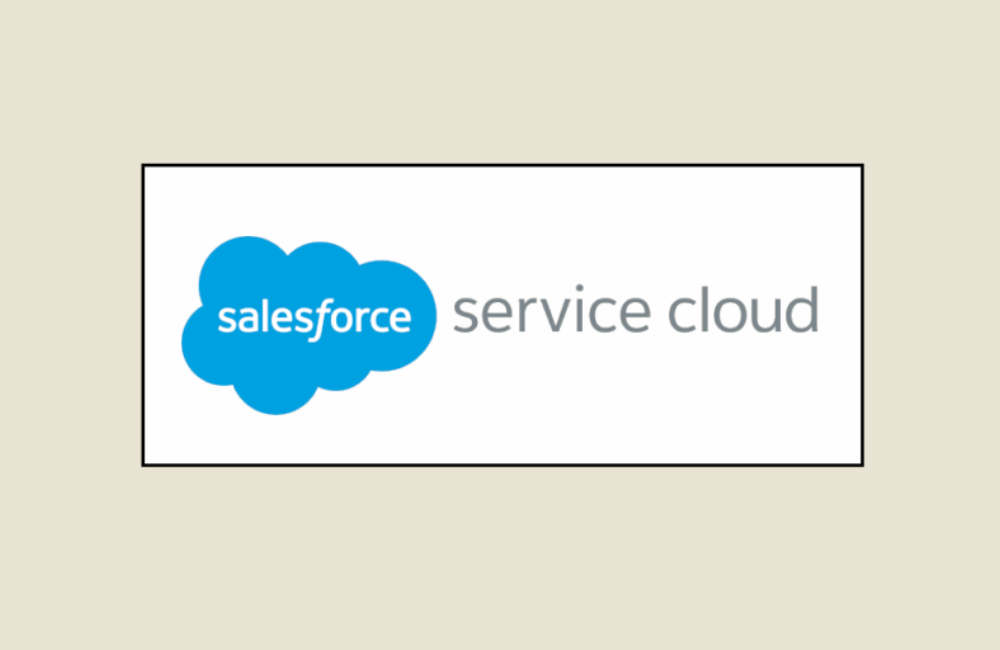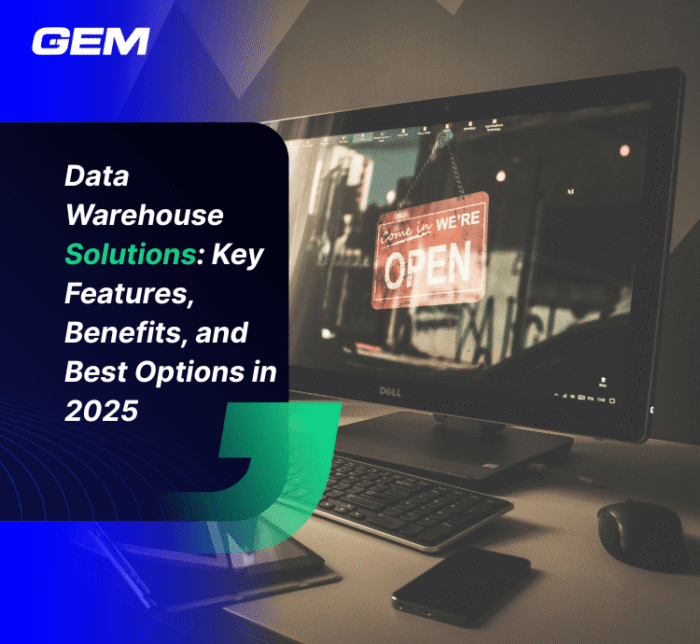Contents
- What is Customer Experience Analytics?
- Why Customer Experience Management Is a Strategic Lever in 2025
- Core Categories of CXM Software
- What Data Powers Customer Experience Analytics?
- 5 Best Customer Experience Management Software for Businesses in 2025
- Best Practices to Enhance Customer Experience with Customer Experience Analytics and Management
- Elevating Your CX Strategies with GEM Corporation
- Conclusion
Customer experience analytics is gaining traction as more companies shift from reactive service models to insight-driven customer engagement. With growing volumes of feedback, chat data, and behavioral signals, the right software can help teams extract patterns and act faster. In this article, we’ll explore the top platforms leading the customer experience management (CXM) space in 2025, the types of data they rely on, and how businesses are applying them at scale. We’ll also outline practical strategies to help teams get measurable value from their CX investments. First, let’s look at why CXM is becoming a strategic focus.
What is Customer Experience Analytics?

Customer Experience (CX) Analytics refers to the process of collecting, analyzing, and interpreting data from customer interactions to uncover patterns in behavior, expectations, and pain points. It includes both direct feedback, such as surveys and indirect signals like online reviews, support transcripts, and behavioral data across digital platforms. These insights help teams identify friction points, improve service design, and tailor experiences that align with customer intent.
Why Customer Experience Management Is a Strategic Lever in 2025

Customer expectations are shifting, and businesses are adjusting priorities to match. In 2025, customer experience management (CXM) is influencing buying decisions, brand perception, and long-term growth strategy. As CXM platforms evolve to capture more data across more channels, companies are using these insights to personalize engagement, streamline journeys, and retain high-value customers.
Several market signals point to why CXM is being prioritized at both operational and executive levels:
- 48% of consumers are willing to pay more for a better customer service experience
- 46% are likely to increase spending when the experience is personalized
- 50% are willing to share personal information in exchange for more relevant and timely interactions
These behaviors suggest a clear shift: customer experience is becoming a measurable driver of revenue. In response, leading companies are using CXM tools to:
- Monitor sentiment in real time across digital and physical channels
- Identify friction points that impact conversion or loyalty
- Use feedback loops to refine onboarding, support, and product interactions
- Align service delivery with individual preferences and behavioral patterns
Core Categories of CXM Software

Customer Experience Management (CXM) platforms cover a wide set of capabilities, often integrating multiple functions across service, marketing, and analytics. As businesses scale their CX efforts, software selection is moving toward modular, data-driven platforms that can address specific use cases while supporting enterprise-wide integration.
Customer service and support
These systems are designed to manage inbound customer inquiries and deliver consistent resolutions across support channels.
Key Features:
- Omnichannel ticketing (email, chat, phone, social)
- Automated routing and escalation handling
- Self-service portals and knowledge base integration
- Agent performance dashboards and SLA tracking
Goals:
- Improve first-contact resolution
- Shorten average handle time
- Maintain consistent service quality across touchpoints
Feedback and analytics
This category focuses on collecting structured and unstructured feedback, then turning it into actionable insights.
Key Features:
- Survey builders with NPS, CSAT, CES templates
- Text and sentiment analysis for open responses
- Real-time dashboards with trend and outlier detection
- Integration with CRM and support systems for closed-loop feedback
Goals:
- Identify customer pain points early
- Track satisfaction trends over time
- Support continuous experience design improvements
Customer data management (CRM)
CRM systems serve as the central hub for customer information, enabling teams to track interactions, preferences, and transaction history.
Key Features:
- Unified customer profiles with behavioral and transactional data
- Contact and opportunity management
- Workflow automation and segmentation tools
- Integration with service, sales, and marketing platforms
Goals:
- Maintain accurate, accessible customer records
- Support personalized outreach and service
- Align teams on customer context and history
Personalization and marketing automation

These platforms focus on delivering tailored experiences across digital channels based on customer behavior, attributes, and intent signals.
Key Features:
- Audience segmentation based on real-time behavior
- Trigger-based messaging via email, SMS, and web
- A/B and multivariate testing tools
- Campaign performance analytics and ROI tracking
Goals:
- Increase engagement and conversion rates
- Improve campaign relevance and timing
- Scale personalization without manual effort
Customer journey orchestration
This software maps and manages the full customer journey, identifying key interaction points and automating context-aware responses.
Key Features:
- Journey mapping and visualization
- Real-time data ingestion from multiple sources
- Rules-based and AI-driven journey triggers
- Coordination of actions across departments (e.g., support, marketing)
Goals:
- Reduce friction across transitions in the customer lifecycle
- Improve experience consistency across channels
- Deliver proactive interventions based on behavior
AI and machine learning
AI capabilities are increasingly embedded across CXM platforms to automate insight discovery and decision-making.
Key Features:
- Predictive analytics for churn, satisfaction, and intent
- Natural language processing for voice and text feedback
- Conversational AI for chatbots and virtual assistants
- Recommendation engines for next-best action
Goals:
- Accelerate insight generation from large datasets
- Improve accuracy of personalization and targeting
- Automate repetitive tasks while preserving experience quality
What Data Powers Customer Experience Analytics?

CX analytics platforms rely on a diverse mix of customer data, gathered from both direct feedback and operational signals. These inputs form the basis for understanding individual preferences, journey performance, and service outcomes.
Direct feedback customer data
This data is voluntarily provided by customers, typically in response to structured prompts.
Key Sources:
- Net Promoter Score (NPS): Measures likelihood of recommending the brand
- Customer Satisfaction (CSAT): Captures satisfaction after a specific interaction
- Customer Effort Score (CES): Assesses perceived effort required to complete a task
- Voice of the Customer (VoC): Aggregated insights from surveys, interviews, and support interactions
- Open Text Comments: Freeform responses that offer detailed sentiment and context
- Social Media Responses: Public or private messages expressing satisfaction or complaints
Primary Goals:
- Understand customer sentiment at specific journey points
- Identify common friction areas or service gaps
- Prioritize improvements based on real-time feedback
Indirect feedback customer data
This includes behavioral or transactional data that offers insight without direct input from the customer.
Key Sources:
- Average Handle Time (AHT): Reflects efficiency in resolving support requests
- Customer Lifetime Value (CLV): Forecasts total future value per customer
- Average Spend: Indicates engagement and purchasing behavior
- Customer Churn Rate: Tracks the percentage of customers who stop using a product or service
- Customer Renewal Rate: Measures contract or subscription continuation
- Voice and Chat Transcripts: Captured interactions that reveal tone and topic trends
- Social Listening: Monitors brand mentions and sentiment across digital platforms
- Customer Review Monitoring: Analyzes themes and ratings from third-party review sites
Primary Goals:
- Detect patterns that correlate with retention or churn
- Improve operational performance across support and marketing
- Feed predictive models for proactive CX interventions
Combining both types of data allows organizations to move from reactive service models to predictive, insight-driven experience strategies. The strength of customer experience analytics lies not just in the volume of data collected, but in the ability to interpret it in real time and apply it across the customer lifecycle.
Explore more: Four must-know technology trends to prepare for 2025
5 Best Customer Experience Management Software for Businesses in 2025

Zendesk
Zendesk continues to be one of the most widely adopted platforms for customer service and support, offering an integrated suite that simplifies complex customer interactions. Designed for scalability, it provides a unified workspace for agents to manage inquiries, track performance, and automate workflows.
Key Features
- Centralized ticketing system to manage support requests
- Omnichannel support across email, voice, social messaging, and live chat
- AI agents that resolve common issues automatically
- Workflow automation to route tasks and reduce manual intervention
- Pre-built analytics dashboards for issue tracking and operational insights
- AI-powered Content Cues to generate help articles from ticket themes
- Contextual ticket interface customization for different agents and teams
- Multilingual support and compliance with major data protection standards
- Access to over 1,600 apps and integrations, supporting a wide range of business use cases
Positioning
Ideal for support teams aiming to scale operations without losing visibility or control. Its AI and automation capabilities make it especially effective in high-volume environments.
Zoho CRM
While traditionally known for customer relationship management, Zoho CRM has evolved into a full-spectrum CXM platform. It brings together sales, marketing, and support functions into a single interface, allowing businesses to manage the customer lifecycle from acquisition through retention.
Key Features
- Omnichannel communication: phone, email, live chat, and social
- Sales automation with lead scoring, workflows, and pipeline management
- AI assistant “Zia” for forecasting, anomaly detection, and sentiment analysis
- Real-time analytics and custom dashboards
- Integration with Zoho Desk for support ticket management
- Marketing automation for email campaigns and lead nurturing
Positioning
A suitable choice for small to mid-sized businesses looking for an integrated CXM and CRM solution. Especially valuable for organizations that want to unify their revenue operations without using multiple platforms.
Salesforce Service Cloud

Salesforce Service Cloud remains a leading enterprise-grade CXM solution, offering extensive capabilities for service delivery, field support, and case management. Its strength lies in its deep integration with Salesforce’s broader ecosystem and its ability to manage complex customer journeys.
Key Features
- Case management dashboard for multi-channel service
- AI-powered chatbots and service automation tools
- Robust knowledge base for quick issue resolution
- Mobile-ready field service functionality with technician support
- Integration with sales and marketing systems within Salesforce
Positioning
Best suited for enterprise teams managing high volumes of support requests across geographies. Particularly effective in industries where field service and mobile workforce coordination are central to customer satisfaction.
Qualtrics
Qualtrics specializes in experience management with an emphasis on capturing and acting on customer sentiment. Known for its powerful survey engine and advanced analytics, the platform serves as a listening system integrated across multiple departments.
Key Features
- Survey creation using a modular block approach
- Distribution across email, SMS, web, and social media
- Automated alerts and tasks triggered by customer feedback
- Custom CX dashboards for monitoring satisfaction and sentiment
- Text iQ and Stats iQ tools for real-time topic and emotion analysis
- Ability to combine operational and experience data for holistic insights
Positioning
Designed for organizations that prioritize insight-driven decision-making. Particularly effective for companies investing in VoC programs and proactive experience design.
HubSpot Service Hub
HubSpot’s Service Hub extends the capabilities of its CRM to include customer service and experience management. Its strength lies in its native integration with the broader HubSpot suite, offering a full view of customer interactions across sales, marketing, and support.
Key Features
- Ticketing system with automation and routing
- Live chat and shared inbox for real-time support
- Knowledge base tools for self-service enablement
- Customer feedback collection via NPS, CSAT, and custom surveys
- Reporting dashboards to track performance and customer sentiment
- Integrated with HubSpot’s CRM, Marketing Hub, and Sales Hub
Positioning
A practical solution for marketing and service teams looking to consolidate customer data and deliver consistent support. It’s especially attractive for growing businesses that already use the HubSpot ecosystem.
Best Practices to Enhance Customer Experience with Customer Experience Analytics and Management

Customer experience analytics and management (CXA and CXM) are most effective when they go beyond reporting and are integrated into decision-making across the customer lifecycle. Companies that treat customer data as a strategic asset are gaining clearer visibility into what drives satisfaction, loyalty, and revenue. The following practices illustrate how to use CX analytics and management to shape more relevant, timely, and consistent experiences at scale.
1. Personalize Experiences Through Data
Effective personalization starts with a clear understanding of individual behaviors, preferences, and context.
How to apply it:
- Use behavioral data (purchase history, clickstream, service usage) to shape real-time recommendations and offers
- Integrate structured feedback (CSAT, NPS) with CRM and marketing platforms to tailor content and outreach
- Build dynamic customer profiles that update continuously based on interaction patterns
- Trigger contextual actions based on journey stage (e.g., onboarding, renewal, post-support follow-up)
Outcome: Customers receive experiences that reflect their intent and history, improving relevance and engagement.
2. Use Predictive Signals to Reduce Customer Churn
Churn often follows a pattern – declining engagement, increased complaints, or slower response to outreach. CX analytics platforms help identify these signals early.
How to apply it:
- Deploy churn prediction models using a combination of behavioral, transactional, and feedback data
- Visualize churn risk by segment, customer tier, or product line to prioritize retention efforts
- Set alert thresholds for changes in sentiment, support volume, or usage frequency
- Develop playbooks for proactive outreach based on risk levels (e.g., product coaching, loyalty incentives)
Outcome: Teams intervene before dissatisfaction turns into lost business.
3. Increase Repurchase Rates with Journey-Based Insights
Understanding when and why customers return is more valuable than tracking conversion in isolation. Journey analytics can reveal the moments that influence repeat behavior.
How to apply it:
- Map end-to-end journeys to identify key repurchase and upsell touchpoints
- Analyze time between transactions to optimize re-engagement windows
- Surface content or support resources that increase post-purchase confidence
- Track which interventions lead to higher second-purchase rates by segment
Outcome: Repeat purchases are less dependent on discounts and more driven by experience quality.
4. Connect CX Metrics to Operational Decisions
Metrics like NPS or CES are often isolated from execution. When they’re linked to operational systems, they become action triggers.
How to apply it:
- Integrate feedback scores into CRM and service systems so teams respond based on customer sentiment
- Tag recurring themes in open-text feedback and route them to the relevant owners (product, support, etc.)
- Monitor score trends by channel or product line to detect systemic issues
- Use VoC dashboards to inform roadmap planning and feature prioritization
Outcome: CX metrics drive decisions, not just reporting.
5. Automate Where It Adds Value
CX automation works best when it improves speed, consistency, or access without sacrificing empathy.
How to apply it:
- Use AI assistants to handle predictable queries, while routing complex or high-emotion issues to human agents
- Implement workflow automation for routine follow-ups (e.g., CSAT surveys, service reminders)
- Apply AI to categorize feedback and detect sentiment in voice or chat transcripts
- Monitor automation impact on resolution time, CSAT scores, and escalation rates
Outcome: Operational efficiency increases without compromising experience quality.
6. Close the Loop on Feedback Internally and Externally
Feedback collection only matters if it leads to action. Closing the loop builds accountability internally and trust externally.
How to apply it:
- Acknowledge customer feedback promptly, especially when scores are low or comments indicate a serious issue
- Track how quickly teams resolve issues flagged through feedback channels
- Share visible outcomes of feedback internally to reinforce its impact on product or service changes
- Communicate back to customers when their input has led to an update or fix
Outcome: Customers see that their voice drives change and are more likely to share feedback again.
Elevating Your CX Strategies with GEM Corporation

GEM Corporation is a global IT service provider and consultancy that builds high-impact digital solutions for forward-thinking enterprises. Since 2014, we’ve partnered with businesses across the Asia-Pacific, the EU, and the US, and beyond to deliver technology that supports scale, speed, and customer-centricity. With over 400 engineers and more than 300 successful projects, GEM operates at the intersection of product innovation and enterprise execution.
Our work helps businesses translate CXM strategies into operational systems by integrating software platforms with core processes, data pipelines, and customer touchpoints. Through our Custom Software Development and Application Modernization services, we tailor CXM implementations to meet real-world business needs, whether that means adapting AI-based workflows or restructuring service architecture. Our testing services, including Functional Testing and End-to-End Application Testing, ensure that customer interactions remain consistent, secure, and responsive across platforms. From building cloud-ready CXM ecosystems to optimizing feedback loops with AI and automation, GEM provides the technical foundation for customer experience programs that perform at scale.
Conclusion
Selecting the right platform is only part of the equation – real impact comes from how customer experience analytics are applied across journeys, teams, and decisions. Solutions like Zendesk, Salesforce, and Qualtrics offer the infrastructure, but outcomes depend on how well businesses align data, automation, and service delivery. As CXM tools grow more sophisticated, so does the need for integration, testing, and continuous optimization. To explore how GEM can support your CX strategy with tailored engineering and analytics expertise, contact us today.






